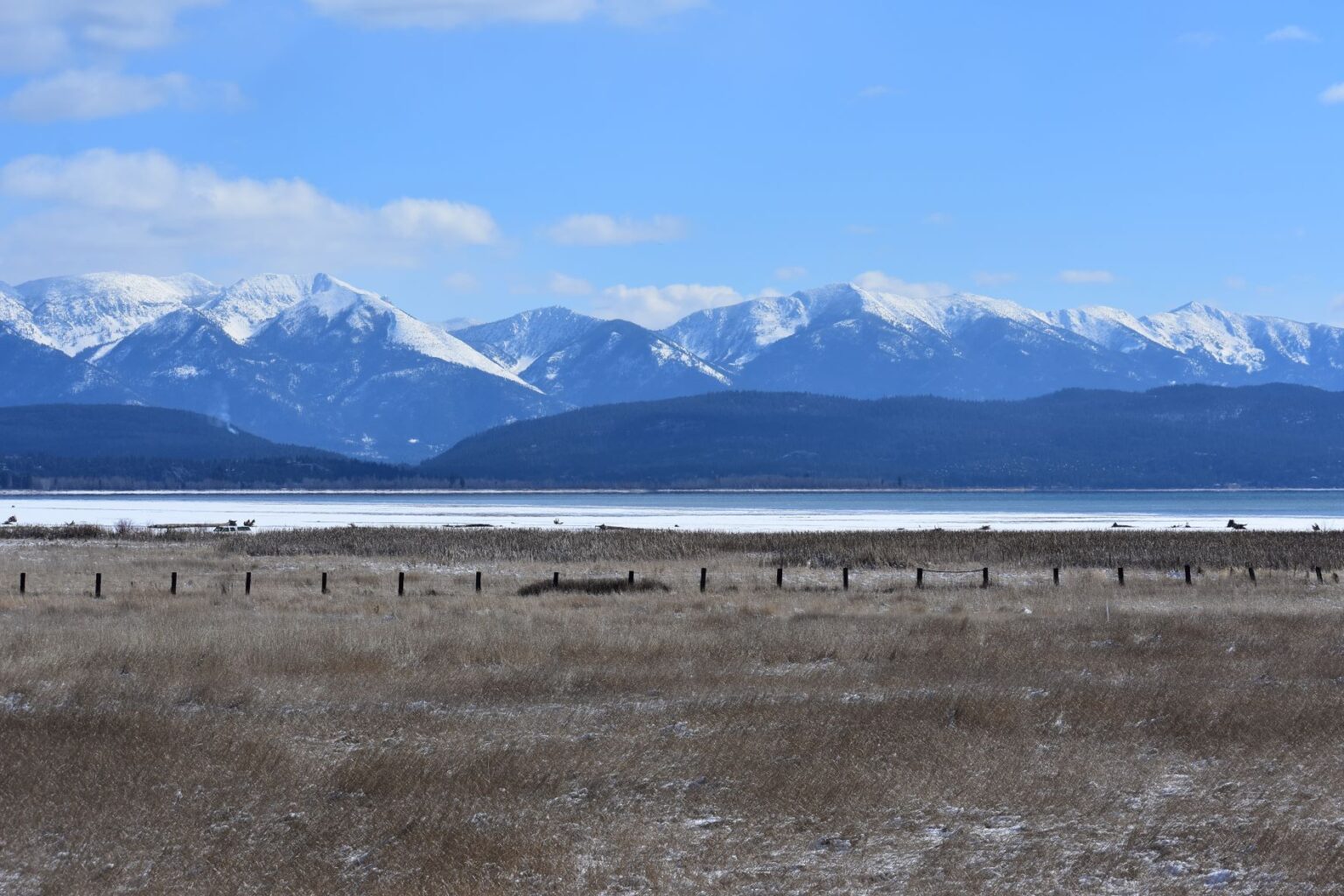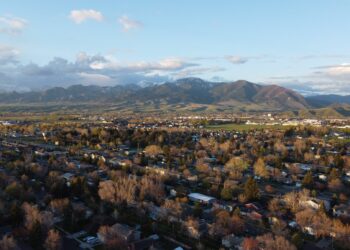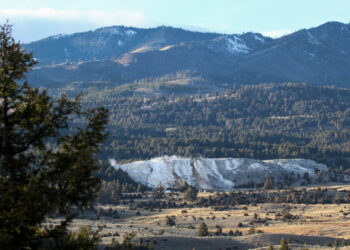Team rejects proposal to release more water from Hungry Horse to boost Flathead Lake levels
By Blair Miller DAILY MONTANAN
Global temperatures reached their warmest in decades, if not longer, last week as the state heads into its hottest weekend so far this year, possibly pushing up to 100 degrees in western Montana.
Drought and a quick-melting snowpack have put Flathead Lake at record-low levels, and anglers are under the first fishing restrictions of the season on portions of the Sun and Madison rivers due to warm water temperatures and low flows.
Meanwhile, the Montana Fish and Wildlife Commission adopted new emergency fishing regulations in June for the Big Hole, Beaverhead and Ruby rivers amid a steady decade-long decline in trout populations due in part to warming water and more pressure from anglers.

Together, those landmarks are signals that climate change caused by greenhouse gas emissions is having both global and local effects, ones likely to get worse, climate scientists have said over the past week.
“The sad thing is we’ve been predicting this for 20 years, and now it’s arrived,” said climate scientist Steve Running, a retired University of Montana professor of ecosystem and conservation science and part of the Intergovernmental Panel on Climate Change that won a Nobel Peace Prize in 2007.
Last month, Running testified as an expert witness at the Held v. Montana trial. He reflected this week on climate impacts in Montana as the state awaits the judge’s decision on whether a provision of state law that says the state cannot analyze the impacts of greenhouse gas emissions violates Montanans’ constitutional right to a clean and healthful environment.
“As climate scientists, we’re not surprised by any of this,” he said. “Unfortunately, this is just kind of the result of the continued heat trapping that the greenhouse gases have done.”
The results have wildlife biologists hunting for reasons fish are dying in the Big Hole, politicians and business owners calling for action on Flathead Lake, and the National Weather Service issuing warnings about heat-related health concerns.
No immediate solution for Flathead Lake levels
Since last month, county commissioners and Republican Gov. Greg Gianforte have been calling on the federal government that manages the Hungry Horse Dam upstream of Flathead Lake to find solutions to low lake levels, which are putting pressure on recreation businesses that bring millions into the local economy.
“These low water levels present a significant threat to the economic vitality of the region,” Gianforte said in a letter sent a week ago to Department of Interior Deputy Secretary Tommy Beaudreau.

Gianforte has been vocal about the lake shortages, telling the federal government and the Columbia River Basin Technical Management Team (TMT), which advises the Bureau of Reclamation on releases from Hungry Horse and other reservoirs in the basin, that their efforts have fallen short.
But the governor submitted the formal request the team and bureau had asked for on Thursday, one day after the team first met. After discussing possible solutions at an emergency meeting Friday, the team declined to approve the final proposal that would have released more water from Hungry Horse.
Members of the teams voiced concerns about the opinion from team experts that the proposed releases might not get Flathead Lake where the governor and county commissioners want it to be, impacts to protected bull trout in the Flathead River from bumping water levels again, as well as worries that in an El Niño year, Hungry Horse might not be able to refill after next winter, which would also impact flows downstream from Montana.
Some members also said they felt somewhat rushed into action this week by Montana’s request, and Montana’s representatives for the team objected to the proposal as well. None of the team members voted in favor of the plan.
Running was at his Flathead Lake cabin last weekend and said he had seen the low lake levels firsthand. The lake’s surface elevation sat at 2,891 feet on Friday, more than 22 inches below full pool, according to U.S. Geological Survey data. USGS data also showed Hungry Horse was already 6.7 feet below full pool on Friday.
Running explained that while certainly not all the low lake levels have been caused by climate change, the probability of these kinds of events happening increases as atmospheric greenhouse gases also build.
He said April 1 had long been the peak for Montana snowpack, but in 2023, snow melted well before April 1, faster than it has in 30 years. He said he believes some protocols need to be adjusted to account for the changes.
“If there’s not enough snowpack, then you end up not being able to fill the lake and sustain it full, and that’s what’s happening this year,” he said.
Warmer waters, low flows lead to fishing restrictions, studies in southwest Montana
Southwest Montana is experiencing impacts on waterways too.
Despite better snowpack and spring precipitation this year, the Montana Fish and Wildlife Commission already adopted new emergency fishing regulations in June for the Big Hole, Beaverhead and Ruby rivers amid a steady decade-long decline in trout populations due to warming water over the years, lower flows, and more pressure on the fish from anglers.

Fish, Wildlife and Parks also launched a portal for anglers and people who use the state’s rivers to report instances of sick or dead fish, particularly in southwest Montana, to try to glean more information about why more trout are dying or being found with abnormalities in the world-class trout streams.
FWP’s Morgan Jacobsen said the agency had already received 18 reports as of last week, including many from southwest Montana.
“We’re hoping … that as folks provide as specific information as possible, it’ll help us identify trends if there are any and where that’s taking place,” Jacobsen said.
Last week, FWP also unveiled its upcoming research efforts to study the declines in those three rivers, which include a fish mortality study, a juvenile fish study, a fish health study and the increased sick fish monitoring.
Jacobsen said the bulk of that work will be done next year once some Montana State University students join the programs, but some of it will get underway this summer.
FWP Director Dustin Temple met with anglers in Butte on June 7 to discuss the Jefferson Basin trout population, and the department’s updated fisheries management plan is nearing its finalization.
A new group of fly fishermen, businesses, outfitters and others have also launched a new organization in southwest Montana, Save Wild Trout, that aims to focus on studying the rivers and trout populations in the face of what they say has been inaction by the state.
“The world-class Big Hole River and the entire Jefferson Basin is our canary in the coal mine moment, but we aren’t alone, and this won’t be the last crisis facing wild trout,” said a statement from Wade Fellin, a member of the organization and co-owner of Big Hole Lodge. “What we do now will determine our future because dead rivers are in no one’s interest.”
Jacobsen said FWP has been meeting and in communication with many people and groups in the area, along with conservation organizations like Trout Unlimited.
“Really, I think there’s a collective recognition at the importance of this issue and this sense of urgency to better understand what’s going on and to take appropriate action,” Jacobsen said.
Warmest temperatures of the year expected to move in this weekend
Meanwhile, a high-pressure ridge is expected to push temperatures into the 90s and near 100 degrees this weekend into early next week in western Montana – about 15 degrees above normal, according to the National Weather Service, though temperatures could be limited by Canadian wildfire smoke moving into Montana – which could lead to even lower stream and lake levels due to evaporation and health concerns for people.
“This could cause problems for those working or recreating outdoors during the day, and for those susceptible to heat-related health problems,” the NWS Great Falls wrote in Thursday’s forecast discussion.
National Weather Service data show the Kalispell area has seen average temperatures 3.5 degrees above normal for the month so far, about one-tenth of its normal precipitation for July, and about half of its normal yearly precipitation through the first half of the year.
The warmer temperatures coming also coincide with the first fishing closures due to water temperatures above 70 degrees on portions of the Sun and lower Madison rivers. There are likely more closures to come, FWP’s Jacobsen said in an interview Thursday.
Running, the climate scientist, said Montana is in a unique hydrologic situation from most other parts of the country because it is so reliant on snowpack and does not typically receive as much summer rain, leading to streams and rivers drying up faster.
At the trial, Running said it was not up for dispute that climate change was already occurring in Montana and that it would only lead to more extreme weather events that happen more frequently with less predictability if the state and others do not stop burning fossil fuels.
Since parts of the state can see different weather and climatological patterns at the same time of the year – like the current situation in northwest Montana compared to southwest Montana – those differences can have sweeping effects, he said.
“We’ve got both ends of the hydrologic cycle working against us this year, you might say,” he said.













